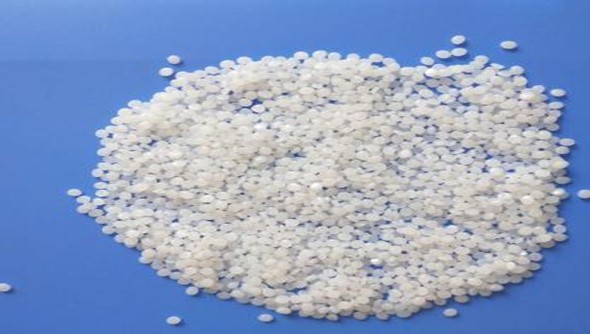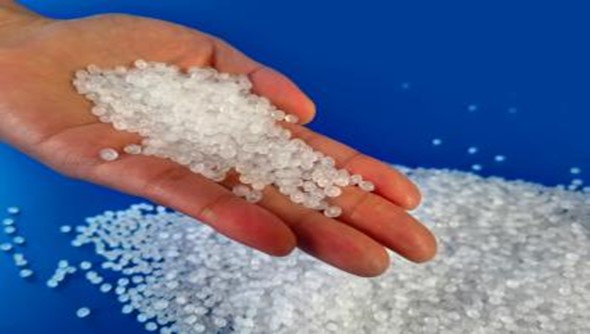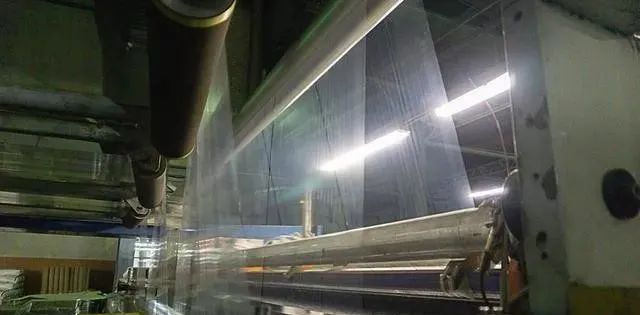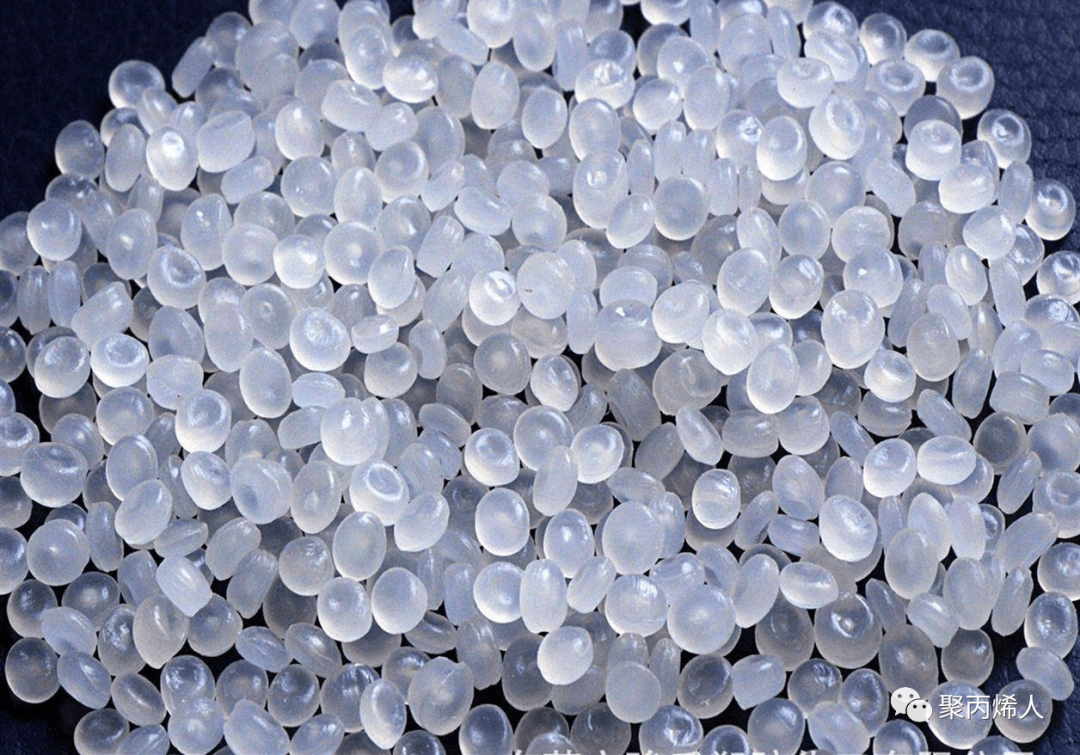-
 Comparison of LLDPE and LDPE .10 21,2022
Comparison of LLDPE and LDPE .10 21,2022Linear low density polyethylene, structurally different from general low density polyethylene, because there are no long chain branches. The linearity of LLDPE depends on the different production and processing processes of LLDPE and LDPE. LLDPE is usually formed by the copolymerization of ethylene and higher alpha olefins such as butene, hexene or octene at lower temperature and pressure. The LLDPE polymer produced by the copolymerization process has a narrower molecular weight distribution than general LDPE, and at the same time has a linear structure that makes it have different rheological properties. melt flow properties The melt flow characteristics of LLDPE are adapted to the requirements of the new process, especially the film extrusion process, which can produce high quality LLDPE products. LLDPE is used in all traditional markets for polyethylene. Enhanced stretch, penetration, impact and tear resistance properties make LLDPE suitable for films. Its excellent resistance to environmental stress cracking, low temperature impact resistance and warpage resistance make LLDPE attractive for pipe, sheet extrusion and all molding applications. The latest application of LLDPE is as a mulch for landfills and linings for waste ponds. Production and Characteristics The production of LLDPE starts with transition metal catalysts, especially of the Ziegler or Phillips type. New processes based on cycloolefin metal derivative catalysts are another option for LLDPE production. The actual polymerization reaction can be carried out in solution and gas phase reactors.Typically, octene is copolymerized with ethylene and butene in a solution phase reactor. Hexene and ethylene are polymerized in a gas phase reactor. The LLDPE resin produced in the gas phase reactor is in particulate form and can be sold as a powder or further processed into pellets. A new generation of super LLDPE based on hexene and octene has been developed by Mobile, Union Carbide. Companies such as Novacor and Dow Plastics launched. These materials have a large toughness limit and have new potential for automatic bag removal applications. Very low density PE resin (density below 0.910g/cc.) has also appeared in recent years. VLDPES has flexibility and softness that LLDPE cannot achieve. The properties of resins are generally reflected in melt index and density. The melt index reflects the average molecular weight of the resin and is primarily controlled by the reaction temperature. Average molecular weight is independent of molecular weight distribution (MWD). Catalyst selection affects MWD. Density is determined by the concentration of comonomer in the polyethylene chain. The comonomer concentration controls the number of short chain branches (the length of which depends on the comonomer type) and thus controls the resin density. The higher the comonomer concentration, the lower the resin density. Structurally, LLDPE is different from LDPE in the number and type of branches, high-pressure LDPE has long branches, while linear LDPE has only short branches. processing Both LDPE and LLDPE have excellent rheology or melt flow. LLDPE has less shear sensitivity because of its narrow molecular weight distribution and short chain branches. During shearing (eg extrusion), LLDPE retains a greater viscosity and is therefore more difficult to process than LDPE with the same melt index. In extrusion, the lower shear sensitivity of LLDPE allows for faster stress relaxation of the polymer molecular chains, and thus a reduced sensitivity of physical properties to changes in blow-up ratio. In melt extension, LLDPE varies under various strains Generally have lower viscosity at speed. That is, it will not strain harden when stretched like LDPE. Increase with the deformation rate of polyethylene. LDPE shows a surprising increase in viscosity, which is caused by entanglement of molecular chains. This phenomenon is not observed in LLDPE because the lack of long chain branches in LLDPE keeps the polymer free from entanglement. This property is extremely important for thin film applications. Because LLDPE films can easily make thinner films while maintaining high strength and toughness. The rheological properties of LLDPE can be summarized as "rigid in shear" and "soft in extension".
-
 Jinan Refinery has successfully developed a special material for geotextile poly10 20,2022
Jinan Refinery has successfully developed a special material for geotextile poly10 20,2022Recently, Jinan Refining and Chemical Company successfully developed YU18D, a special material for geotextile polypropylene (PP), which is used as the raw material for the world's first 6-meter ultra-wide PP filament geotextile production line, which can replace similar imported products. It is understood that the ultra-wide PP filament geotextile is resistant to acid and alkali corrosion, and has high tear strength and tensile strength. The construction technology and the reduction of construction costs are mainly used in key areas of national economy and people's livelihood such as water conservancy and hydropower, aerospace, sponge city and so on. At present, domestic ultra-wide geotextile PP raw materials rely on a relatively high proportion of imports. To this end, Jinan Refining and Chemical Co., Ltd., in conjunction with Beijing Chemical Research Institute and Sinopec Chemical Sales North China Branch, paid close attention to customers' needs for special raw materials, targeted key production plans, repeatedly adjusted process conditions, tracked trial results in real time, and optimized and improved product performance. Produce special materials with both spinnability and mechanical properties, excellent tensile strength and burst strength. At present, YU18D product quality is stable, customer demand is stable, and efficiency is obvious. Jinan Refinery has 31 sets of main production units such as atmospheric and vacuum, catalytic cracking, diesel hydrogenation, countercurrent continuous reforming, lubricating oil series, and polypropylene. The one-time crude oil processing capacity is 7.5 million tons/year, and it mainly produces more than 50 kinds of products such as gasoline, aviation kerosene, diesel, liquefied gas, road asphalt, polypropylene, lubricating base oil, etc. The company has more than 1,900 on-the-job employees, including 7 professionals with senior professional titles, 211 with senior professional titles, and 289 with intermediate professional titles. In the skilled operation team, 21 people have obtained the professional qualifications of senior technicians, and 129 people have obtained the professional qualifications of technicians. Over the years, Jinan Refinery has successively built Sinopec's first heavy base oil bright stock production base and environmentally friendly rubber filler oil production base, and put into operation the world's first 600,000-ton/year countercurrent moving bed continuous reforming unit, striving to build " Safe, reliable, clean and environmentally friendly” model of urban refinery, the quality and efficiency of enterprise development have been continuously improved.
-
 The output of BOPP film continues to increase, and the industry has great potent10 09,2022
The output of BOPP film continues to increase, and the industry has great potent10 09,2022Biaxially oriented polypropylene film (BOPP film for short) is an excellent transparent flexible packaging material. Biaxially oriented polypropylene film has the advantages of high physical and mechanical strength, light weight, non-toxicity, moisture resistance, wide application range and stable performance. According to different uses, biaxially oriented polypropylene film can be divided into heat sealing film, label film, matte film, ordinary film and capacitor film. Polypropylene is an important raw material for biaxially oriented polypropylene film. Polypropylene is a thermoplastic synthetic resin with excellent performance. It has the advantages of good dimensional stability, high heat resistance and good electrical insulation, and is in great demand in the packaging field. In 2021, my country's polypropylene (PP) output will reach 29.143 million tons, a year-on-year increase of 10.2%. Benefiting from the sufficient supply of raw materials, my country's biaxially oriented polypropylene film industry has developed rapidly, and its output has continued to increase. According to data from the National Bureau of Statistics, my country's biaxially oriented polypropylene film production will reach 4.076 million tons in 2021, a year-on-year increase of 8.7%. The production methods of biaxially oriented polypropylene film include tubular film method and flat film method. Due to the uneven quality and low efficiency of the products produced by the tubular membrane method, they have been gradually eliminated by major enterprises. The flat film method can be subdivided into the simultaneous biaxial stretching method and the stepwise biaxial stretching method. The step-by-step biaxial stretching process is as follows: raw material→extrusion→casting→longitudinal stretching→edge trimming→corona treatment→winding→large film roll→aging→slitting→finished product. At present, the gradual biaxial stretching method is adopted by most enterprises due to its advantages of mature technology, high production efficiency, and suitability for mass production. Biaxially oriented polypropylene film is widely used in packaging materials such as clothing, food, medicine, printing, tobacco and alcohol. At present, biaxially oriented polypropylene film has gradually replaced ordinary packaging films such as polyethylene (PE), polypropylene (PP), and polyvinyl chloride (PVC). my country is the second largest packaging country in the world, and the demand for packaging continues to grow. According to statistics from the China Packaging Federation, the cumulative revenue of enterprises above designated size in my country's packaging industry will reach 1,204.18 billion yuan in 2021, a year-on-year increase of 16.4%. With the rapid development of my country's packaging industry, biaxially oriented polypropylene film will have broad market prospects as an important packaging material. Industry analysts from Xinsijie said that benefiting from the sufficient supply of raw materials and the high maturity of production technology, the development potential of my country's biaxially oriented polypropylene film industry is huge. The rapid development of the packaging industry will drive the further expansion of my country's biaxially oriented polypropylene film market. With the deepening of the concept of green consumption, consumers will further improve the quality requirements of packaging materials, and the energy-saving and environmentally friendly biaxially oriented polypropylene film will become the mainstream of the market.
-
 Global PP market faces multiple challenges.09 28,2022
Global PP market faces multiple challenges.09 28,2022




